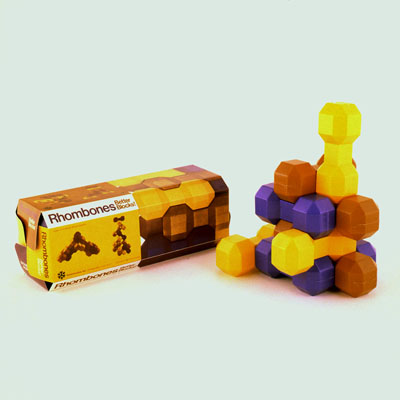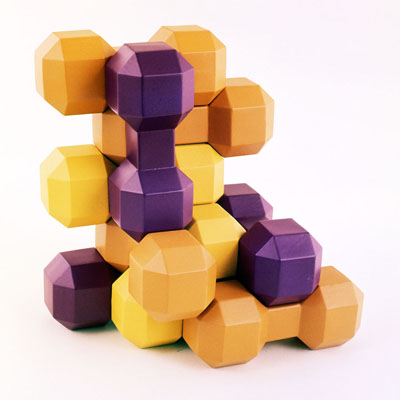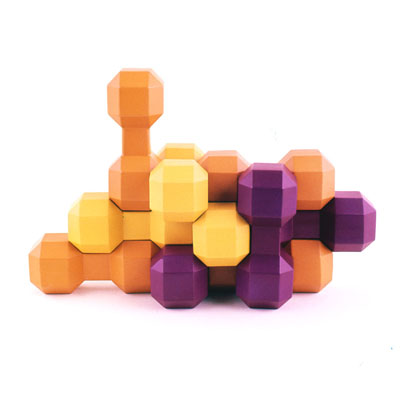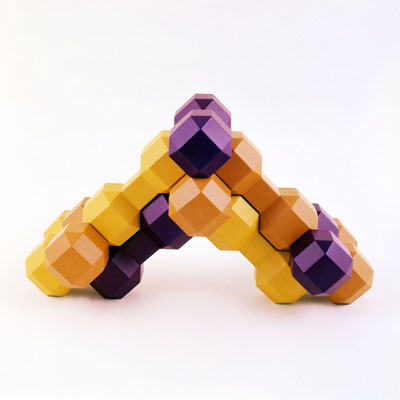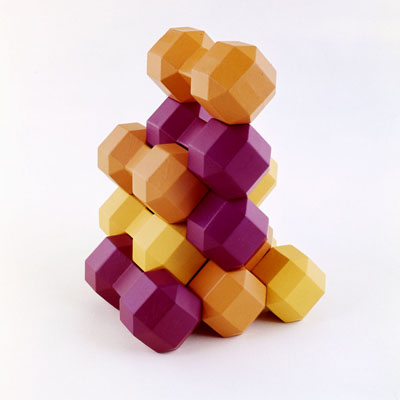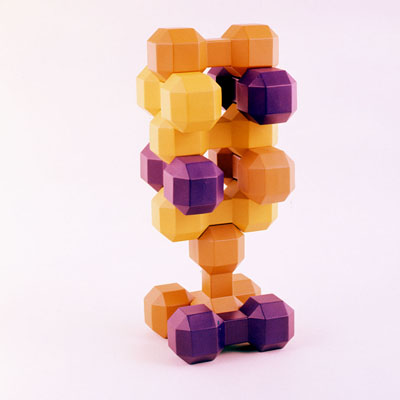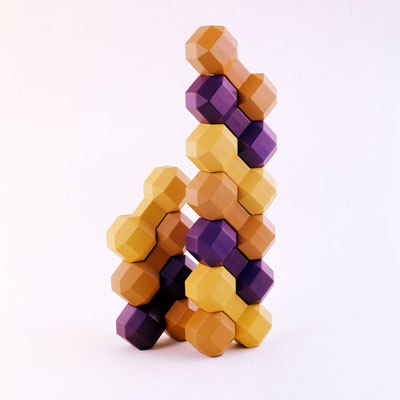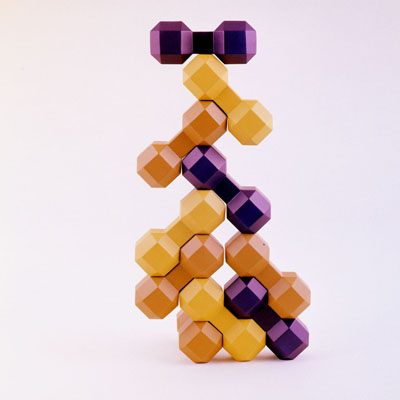.
.
Geometry Kits
Super Structures
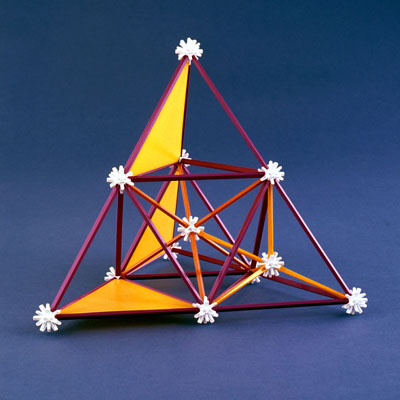
This building toy was derived directly from Pearce’s morphological research as presented in his book, Structure in Nature is a Strategy for Design. In particular, it is the embodiment of a system based on three-dimensional networks. It is comprised of a connector, called the Universal Node, and a family of branch components (struts), which are shape-coded to connect to specific spokes of the Universal Node. Such spokes extend from the node center in specific geometric directions and are configured with square, triangular, or rectangular cross-sections. These shapes are defined by symmetry properties having to do with the directions of their axes. There are a total of 26-spokes (directions): 6 square (orange), 8 triangular (yellow), and 12 rectangular (purple). The kit also includes a family of panels that snap in place, enabling structures to be differentiated with surfaces. The components, along with a variety of possible constructions are shown in the images.
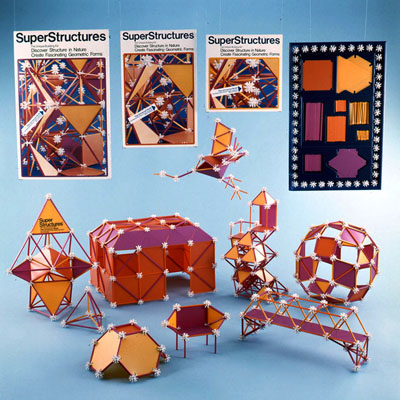
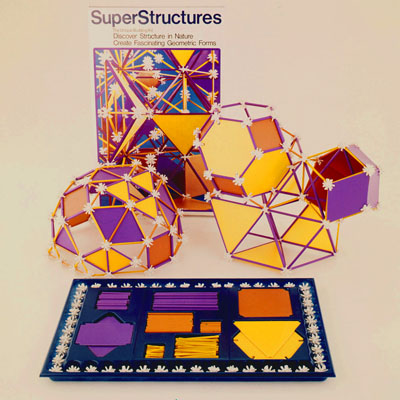

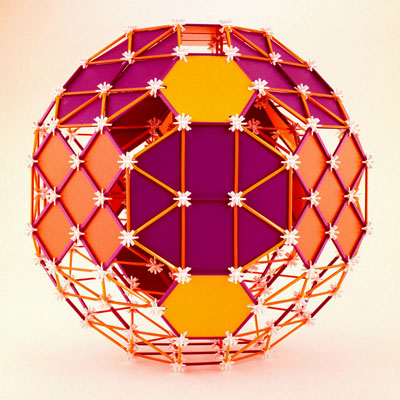
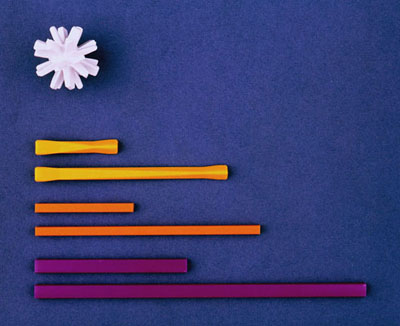
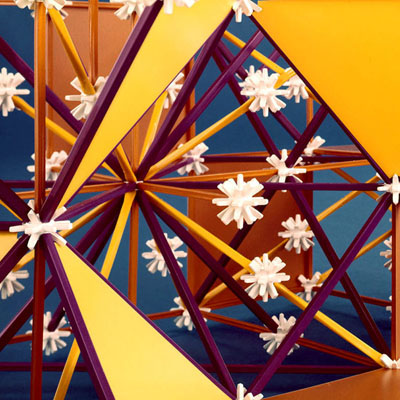

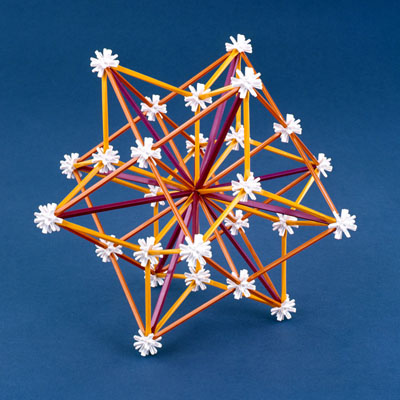


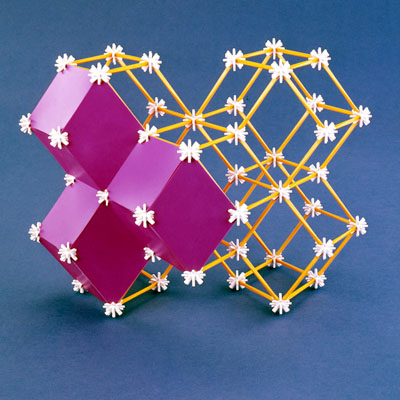
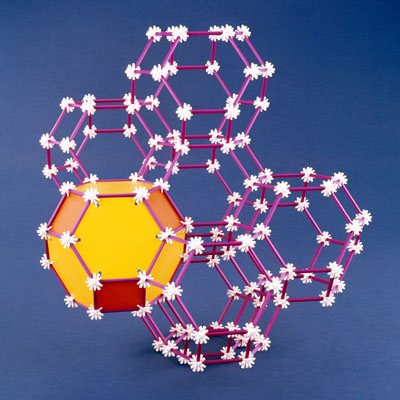
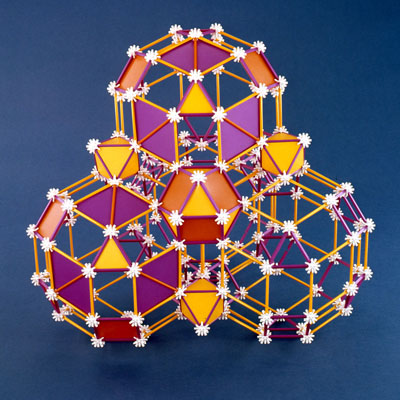
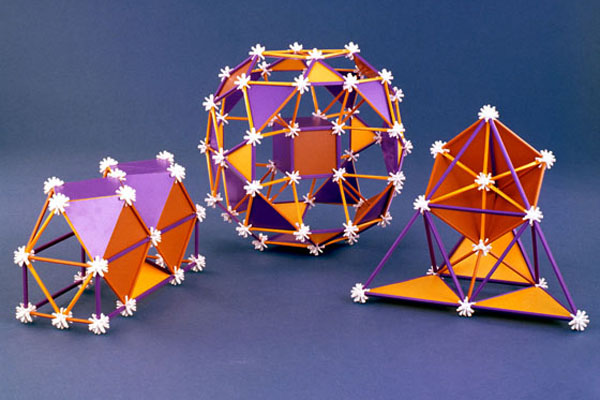
Curved Space
Like the SuperStructures kits, the Curved Space toy was derived directly from Pearce’s morphological research. Indeed, this toy is simply a reduced-scale version of the Curved Space System for playgrounds. Connector clips enable curved surface modules to be joined together in a variety of configurations. This toy does not have the range of options available to the SuperStructures, but opens up other avenues in the exploration of non-orthogonal spatial geometry.
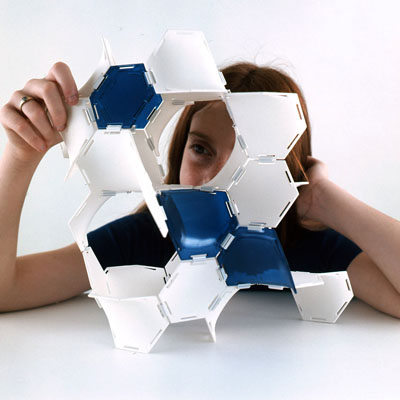
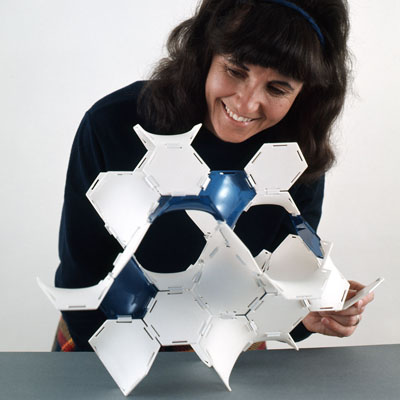
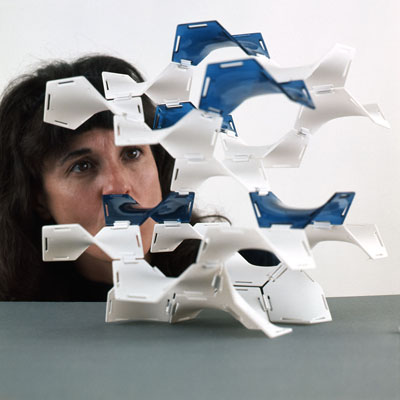
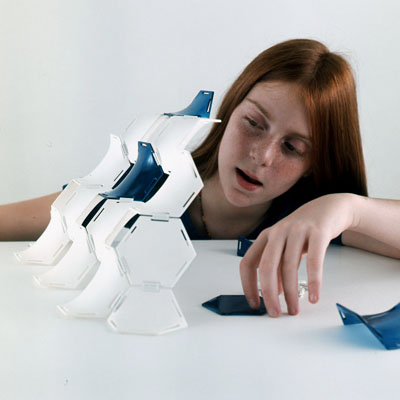
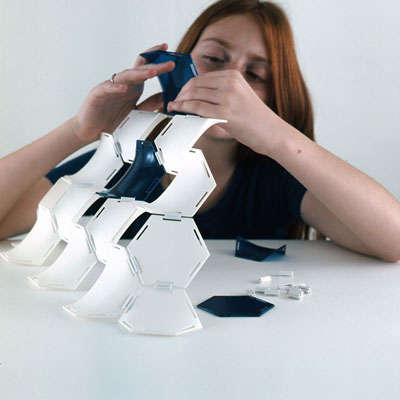
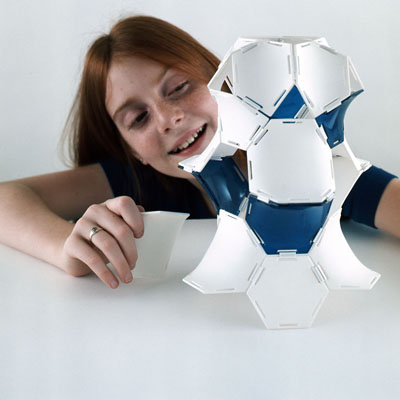
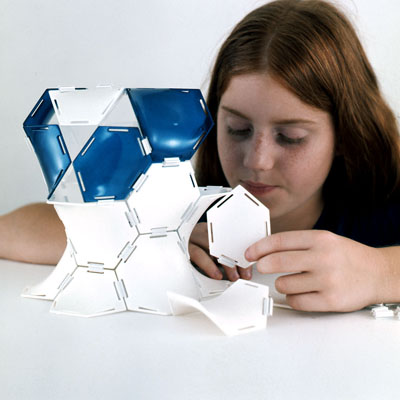
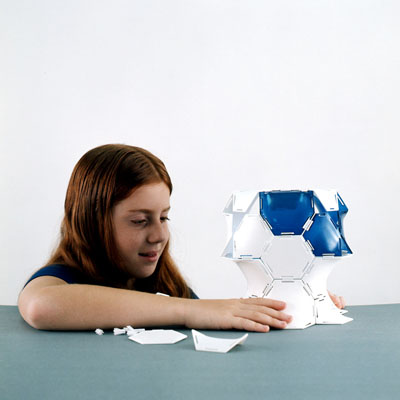
Rhombones
This stacking block toy is derived from a union of two rhombicuboctahedra joined together with a central cube. The name, Rhombones, is suggested by the
dog-bone like geometry created by this union of polyhedra. The rhombicuboctahderon is a semi-regular Archimedean polyhedron comprised of 18 square faces and 8 equilateral triangles for a total of 26 faces. This unit becomes an interesting variation on a block toy with attributes that encourage experiments in balancing and other unusual assemblies. The images show a number of possible stacking and balancing variations.
